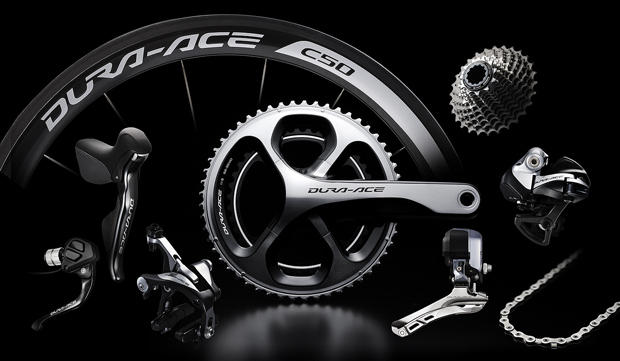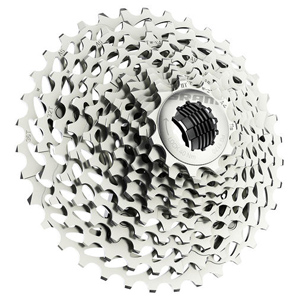Is SRAM tri-ready?
What is SRAM offering you for the sport of triathlon, whether you're interested in a new bike for this year, or, as an aftermarket upgrade to your existing tri bike? Let's talk about it.
SRAM has been hard put-upon by Shimano's electronic groups. I wrote about these groups, and electronic is a desirable option for triathletes down to a pretty aggressive price. Felt offers its electronic-shift B2 for $3699. Does SRAM have an answer for a bike like this?
The answer is yes, yes and eventually. The first "yes" refers to standard 2x (two by) and by this we mean 11 cogs in the back and 2 chain rings in the front. The second "yes" refers to 1x, referring to a single chain ring, and this is an interesting, compelling option we'll discuss below. The "eventually" refers to the worst-kept secret in the category, the electronic group SRAM will eventually offer. I'm not writing about that, and we won't until there's something to write, beyond overviewing the odd bike we see outfitted with this phantom group (as we recently did with Jan Frodeno's SRAM electronic Canyon).
All photos below are of Jordan Rapp's 1x-equipped Dimond, except for a shot of SRAM's 1x derailleurs, and immediately below a composite of a 1x chain ring close-up, and that big bad 10×42 cassette that SRAM's mountain bike 1x group features.
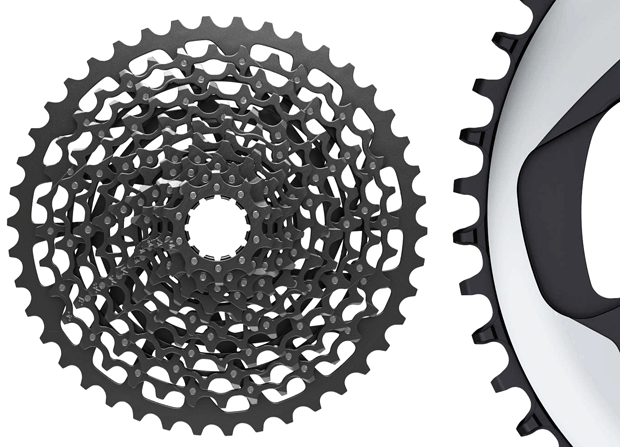
SRAM 2x
SRAM sells 2 groups of primary interest to triathletes, Red and Force, each of which having a standard crank, front derailleur, 2 chain rings. I think one pretty good way to get a sense of the price differential between various groups, I went to Trek's Project One website and messed around with the price of a decked-out 9-Series Speed Concept, subbing in various drive trains. Round to the nearest hundred here's what I got:
$7,800 with Shimano 105 (5800)
$8,200 Shimano Ultegra (6800)
$8,700 with SRAM Force 22
$9,300 with SRAM Red 22
$9,600 with Shimano Ultegra Di2 (6870)
$9,600 Dura ace 9000 (mechanical)
$11,300 Dura ace Di2 (9070)
Bear in mind this isn't the exact difference in cost between all these groups. There are certain components that aren't going to go on Speed Concepts, like brake calipers (the SC has its own).
If you are wedded to the idea of electronic, period, then no need to read further. Go directly to Shimano. In our description of that fine company's products you could read what we say about the virtues of electronic versus mechanical.
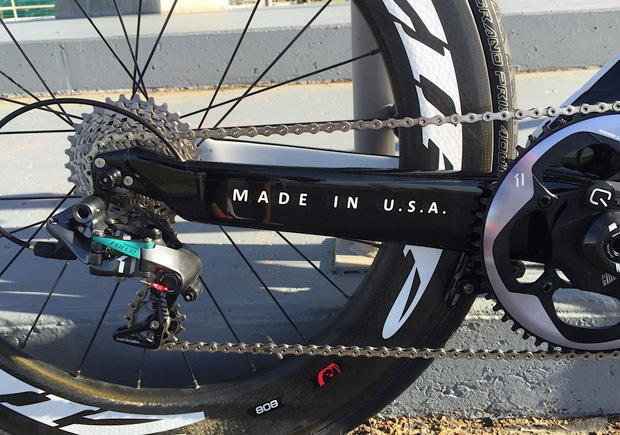
If mechanical shifting appeals to you, or is acceptable to you, SRAM's Red and Force groups contain features that set it apart. The key benefit of electronic shifting (according to me) is that I don't have to trim the front derailleur (see explanation of this in my write-up of Shimano). But SRAM pretty nicely handled this with its Yaw front derailleur, available for both Force and Red, which doesn't require trimming.
Red versus Force
Rival is SRAM next group down from Force. There is not a lot of Rival out there in the tri world, so I'm not going to spend time on it. When you see SRAM spec'd on a tri bike it's almost always Red or Force. What is the difference?
Red has ceramic bearings, and uses carbon and titanium more liberally than does Force. There is a weight difference between the two groups and it amounts to about two-thirds of a pound. This excludes the chain and the cassette. These are "consumables" and it doesn't make a lot of sense to have really light consumables on your bike unless you intend to keep replacing these with parts of similar weight and quality. That might mean $200 and more for a Red cassette (X-Glide or XG 1190), versus anywhere from $60 to $100 for a Force cassette (PowerGlide or PG 1170).
When you look at the $600 difference above, I think a lot of the value of Red goes away the first time you change a cassette and a chain. You're left with that 360 grams of weight difference, and the value of the ceramic bearings. Up to you to determine whether Red is worth the up-charge.

Red would clearly have been the choice a couple of years ago, before all the Red technologies (Yaw, X Glide R chainrings, Exact Actuation, WiFLi) flowed down to Force. Now, Force has all those features. I think Force is the sweet spot in SRAM's road 2x line.
2x or 1x
Let's just get to this, because this is what you want to talk about. We polled you-all, about your theoretical interest in 1x for tri, and you all were pretty evenly split when asked if you'd give it serious consideration for your next tri bike.
SRAM has been producing 1x for a couple of years now. It started in MTB, with its XX1, and continued with its CX1 for cyclocross. The advantage of 1x is not what it appears at face value. In cross, it's not the aerodynamic benefit, nor the weight benefit. A chain that never derails is a huge plus. The change in terrain, the bike being picked up and dropped repeatedly by the rider, means a lot more opportunities for the chain to come off the chain rings.
SRAM CX1 is not simply a cyclocross group with one ring taken off. Cross riders (and MTB riders for XX1) ride a chain ring that has been engineered to hug the chain, and keep it on the ring. Wouldn't this be a good thing for 2x? No, we all want our chains to derail. Hence derailleurs. Not in 1x, which is why the chain rings have a specific shape to the ring and the teeth that 2x chain rings lack, though the new road 1x groups SRAM has just unveiled do vary slightly in the chain ring shape (no mud grooves for road 1x, since there is no mud to contend with).
The derailleur is different as well. There is a ton more tension in the derailleur cage, easy to feel when you pull the bottom pulley forward, simulating the movement of the cage as the bike is shifted to larger and larger cogs. And that's not the whole of it. There's a clutch built into these derailleurs that engages when the derailleur senses a sudden pull by the chain. Like your car's seat belt, the clutch engages and keeps the chain from slapping, such movement producing a wave of chain slack that can ripple forward and derail the chain from the ring on bikes without these features.
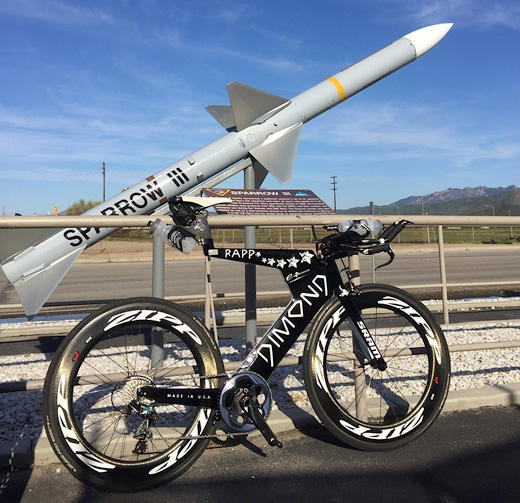
Then tension in the cage is so strong, you couldn't change the rear wheel were there not a push-pin locking the cage open and in place during wheel changes (this makes it very easy to change the wheel).
I and other editors had the opportunity to ride a 40-mile course in San Luis Obispo last week, on cross bikes outfitted with this new road group, and, according to this editor, no complaints as far as it goes. Shifting was good, and bombing several very bumpy, rutty roads gave the chain plenty of opportunity to slap, derail, misbehave and there was none of that. And, the group was quiet (the groupkit, not the group of editors).
Advantage for triathletes
You might think it's a lighter group, but, only marginally. The 170 gram savings between 2x and 1x (in Force) is somewhat in the levers, but you don't use road levers in tri. You do have the weight of one bar-end shifter you save. You save the weight of the front derailleur and one chain ring. That weight is counteracted by the larger cassette for 1x. However, you might not encumber that weight based on the gear inch discussion below.
The studies in which SRAM has engaged show a fraction of a watt difference in the efficiency of the 1x drive train versus 2x, so you're okay there. The ring is mounted to the outside of a double-chain ring crank, and "bends" inward so that the teeth sit right over the midpoint of where the 2 chain rings would sit in a 2x system.
Is there an aerodynamic benefit? I suspect so, but a bike would need to be built for the purpose (no front derailleur hanger, for example) to enjoy that advantage. The largest benefit for triathletes is the largest benefit for cross riders: simplification, and no chain ever coming off the ring, falling between the crank and the frame.
Gearing. This is the tricky part. Chain rings are available in 1x up to 54 teeth, down to 38 teeth, in 2-tooth increments. Cranks are built for 1x in both 110mm and 130mm bolt patterns. You can ride any SRAM 11sp cassette with road 1x, and that means the same 11-26 that you might be riding now can be ridden with this group (the magic is in the chain ring in the front, and in the derailleur; the chain and the cassettes are interchangeable between 1x and 2x). You can also ride the 11-32 cassette you might have on your gravel bike, or on your road bike if outfitted with SRAM WiFli.
You can also ride an 11-36 cassette made just for 1x. Let's assume you choose a 52t ring in front. That's a pretty big gear, when in the 52×11. You would need a gentle, pedaling downhill to justify this gear. This gear, pedaled at 100rpm, means you're riding 37mph.
What about on the other side of the cassette, on the low end? If you had a 52t chain ring on the bike, and an 11-36 cassette, and you were pedaling up a steep hill and in that 36t rear gear, that gives you a gear that is, in what we call "gear inches," a 38" gear. Now, let's say you have a 52×36 standard 2x system, and you're in that 36t chain ring in front. If you have a 11-25 cassette in the rear, that 36×25 is an equivalent 38" gear.
What the 1x does not give you is smaller increments between each gear. Here is the cog progression on the 11-36:
11-12-13-15-17-19-22-25-28-32-36
The gear progression, in inches, in the last 4 cogs of a 52t ring + 11-36 cassette is, starting with the smallest gear:
37.9" – 42.9" – 48.9" – 54.7"
Here's what you get with the 11-25 cassette, with the bike on the 36t ring:
37.9" – 41.3" – 45.0" – 49.7"
The upshot: when you're riding along, all honky dory, at 23mph, no problem. But when you're riding up a steep hill, the jumps between gears are greater with the 1x than with the 2x you're used to riding.
The first 5 gears of an 11-36 cassette are:
11-12-13-15-17
The first 5 gears of a 11-25 cassette are:
11-12-13-14-15
So, not too much difference if you're pedaling at a pretty fast clip on the flats. But, an 11-32, this is where it gets interesting. The first 5 cogs in an 11-32 cassette are:
11-12-13-14-15
Same as the 11-25. A 52×32 is a 43" gear. Same as a 36×22. This, to me, is a compelling option for triathletes who're riding relatively flat courses, who need a somewhat small gear occasionally, but who'll be in the first 5 cogs of the cassette most of the time. The jumps in the cogs when in the small gears aren't as great on the 11-32 as they are on the 11-36, and the jumps are just fine when you're riding at speed.
Also, there are plenty of SRAM 11-32 cassettes available.
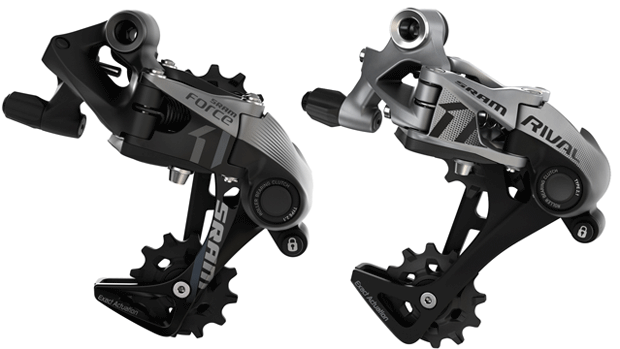
What you cannot do is put that big 10-42 cassette on the back of a SRAM bike built with a 1x group. Well, you can. But you wouldn't, because this cassette, built for SRAM's XX1 MTB 1x system, sits on an entirely different kind of hub, and that hub isn't used for any wheel you'd want to ride. I suppose you could theoretically build a nice Zipp 808 around this hub but Zipp doesn't do it. While the jumps would be big between each gear, you'd have a silly huge gear range, and the athlete who wanted to toodle along in a tiny gear on his tri bike while enjoying a huge gear on the other side would be in heaven. This is the cassette made for St. Croix and, a case could be made for this cassette at Wildflower, for a rider needing a tiny gear. But, alas, you can't use this cassette on any wheel used in road triathlon.
Force 1x
There are two road 1x groups introduced by SRAM, all of which is going to be available in a couple of months, more or less (some is available now to OEMs, some in a couple of months, and stores will get it all about 2 months after the bike makers get their allotments). The two groups are Rival and Force. Force seems to be the sweet spot for SRAM nowadays throughout both 2x and 1x road, but I wouldn't be afraid of chains and cassettes at the Rival level, especially if I had a number of wheels and wanted cassettes for them all.
These derailleurs come with both long and medium cage. You only need the medium cage, because you can ride up to that 11-36 with the medium cage. The long cage would be required for the 10-42 cassette but, as noted, you can't use that cassette for triathlon. At least not yet.
Jordan Rapp, our chief technology officer here and an athlete known to most Slowtwitch readers, has been riding 1x on his Dimond for some months now. Last I heard he's scheduled to race Wildflower, and this would be one of the challenging courses for 1x, because it has long shallow descents requiring a tall gear, and steep ascents requiring a small gear. He's running a 54-tooth chain ring and an 11-30 cassette. Is that 54×30 a small enough gear for the climbs? For him yes. For me, I'd be walking my bike up Wildflower's first 9 percent grade out of the transition area.
SRAM's 1x is absolutely perfect for cyclocross. Is it perfect for tri? Only for the right riders. Very strong riders? Yes. Great for every course. Riders who will usually ride courses without steep uphills? Yes. MOPers or BOPers who'll ride variable courses, like Wildflower? These riders might be better off riding 2x, at least until the 10×42 cassette finds its way onto race wheels.
Still, it is undeniable that a level of complexity is removed when front shifting is removed.


